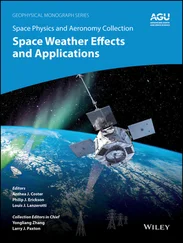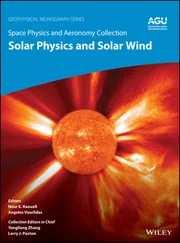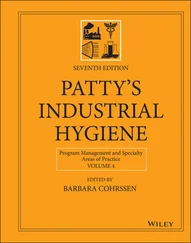Bureau of Mines, Technical Paper No. 248, 1921.
Part V Physical Agents
Herman Cember Ph.D. PE CHP † , and Thomas E. Johnson Ph.D. CHP
Ionizing radiation may be defined as electromagnetic (X‐rays and gamma rays) and particulate radiation (alpha and beta particles, electrons, neutrons, and protons) with sufficient energy to disrupt an atom or a molecule. This is done by knocking out an electron, thereby “ionizing” the atom or molecule.
Knowledge of radiation and safety problems associated with its use goes back more than 100 years, with the discovery of X‐rays in 1895 by Wilhelm Roentgen. On the same day that Roentgen announced his discovery, Emile Grubbe, a physicist working in Chicago with an apparatus similar to Roentgen's, developed severe skin burns after handling an energized cathode ray tube similar to the one used by Roentgen. This was the first work‐related injury from radiation. In 1896, Antoine Henri Becquerel discovered radioactivity while working with an ore called pitchblende. Investigation revealed three different radiations that originated in the ore. Ernest Rutherford named the first two radiations alpha and beta rays. P.V. Villard later named a third type of radiation, the gamma ray (later investigations showed that X‐rays and gamma rays were the same type of radiation). Alpha and beta particles are still occasionally referred to as alpha rays and beta rays as a result of this discovery.
The discovery of these radiations opened new fields of scientific investigation and uses for these radiations. In parallel with the studies of the physics and chemistry of radioactive elements and the associated radiation, researchers were also examining the biomedical effects. With this expanded use of radiation, there were further reports of harmful effects, such as skin burns and hair loss when X‐rays were used in medical diagnosis. In 1899, the first case of a cancer, a basal cell carcinoma on a woman's face, was cured by X‐rays. In 1906, two French physiologists, Bergonie and Tribondeau, published their classical paper on the relative radiosensitivity of different cells and tissues. They found that the less differentiated a cell was, and the more frequently it divided, the more radiosensitive it was. Although to date we have found nothing to contradict their observations, much is understood now about the molecular biology basis for their findings. Since the time of their publication, an enormous amount of information on the nature of the interaction of radiation with living tissue and on the dose–effect and dose–response relationships has been amassed. Sources of information, such as the experiences of the radium dial painters, early radiologists, and uranium miners, showed that occupational overexposures led to harmful effects. Other major sources of information include populations that had been medically exposed to diagnostic and therapeutic radiation, survivors of the atomic bombings in Japan, data from radiation accidents, and epidemiological studies of populations exposed to low‐level radiation from nuclear facilities and from natural background. This body of knowledge forms the scientific basis for the radiation safety standards currently in use. After radiation safety guidelines were developed, occupational exposures that were within the radiation safety guidelines did not lead to harmful biomedical effects.
2 SOURCES OF IONIZING RADIATION
One is exposed to radiation from both naturally occurring and anthropogenic sources. Natural background radiation includes cosmic radiation that originates in the sun and in the stars, and terrestrial radiation that is emitted from radioactive minerals on or within the earth. These naturally occurring background radiations must be accounted for when making radiation measurements and decisions, and in certain instances may pose a potential health threat.
Cosmic radiation, when it enters the earth's atmosphere, consists mainly (90%) of high kinetic energy protons, with the remaining 10% being alpha particles, neutrons, and electrons. The interaction of these very high‐energy particles with the atmosphere leads to the production of certain radioactive isotopes (notably tritium ( 3H) and radiocarbon ( 14C)), muons (extremely high‐energy, heavy electrons that become ordinary electrons when they lose their energy), and gamma rays. Cosmic ray intensity varies according to altitude and latitude. The atmosphere acts as a shield whose total thickness is equivalent to about 30 ft (approximately 9 m) of water. Therefore, cosmic ray intensity is lowest at sea level, and increases with increasing altitude. In the United States, the average dose from cosmic rays at sea level is about 30 millirems (mrem) (0.3 mSv) per year. The mrem is a unit of radiation dose equivalent that is used for safety and regulatory purposes, while the sievert is the SI unit for radiation dose equivalent. One Sievert is equivalent to 100 rems. In Denver, CO, at an altitude of one mile (1.6 km), the cosmic ray dose rate is about twice that at sea level. Thus, jet aircraft crew members receive significant radiation doses in the course of their work (although very much less than the regulatory dose limit for occupational exposure).
The latitude effect is due to the earth's magnetic field. Charged cosmic ray particles entering the earth's atmosphere in the equatorial region travel in a direction that is nearly perpendicular to the earth's magnetic field, whereas charged particles that enter the atmosphere at higher latitudes cross the magnetic lines of force at a glancing angle. The equatorial particles thus experience a much greater magnetic force, which turns them away from their initial path toward the earth, than the particles that enter at the high latitudes. The cosmic ray intensity is therefore lowest at the equator, and increases continuously as the latitude, both north and south, increases.
Terrestrial radiation comes mainly from three different groups of naturally occurring radioisotopes. Primordial radioisotopes that were present when the earth was formed are
238U, T1/2 = 4.5 × 109 years
235U, T1/2 = 7.1 × 108 years
232Th, T1/2 = 1.4 × 1010 years
40K, T1/2 = 1.3 × 109 years.
These radioactive elements are ubiquitous; average uranium and thorium concentrations in the soil are of the order of several parts per million. Natural potassium, which is abundant in the earth's crust, contains approximately 0.012% of 40K.
2.1.1 Uranium and Thorium Progeny
The primordial U and Th isotopes are the progenitors of three chains of sequentially decaying radioisotopes that have several common characteristics. Each series contains a radioisotope of the gaseous element radon, and each series terminates with a stable isotope of lead. Radon gas diffuses out of the ground, and the radon daughters, which are solids under ordinary circumstances, attach themselves to atmospheric dust particles. This naturally occurring airborne radioactivity must be accounted for when using the measured radioactivity in a dust sample to compute the concentration of an airborne radiocontaminant. Although the mean concentration of these naturally occurring radioisotopes is relatively low, the actual radioactivity concentration from this source varies according to the concentrations of uranium and thorium in the ground. Areas that have uranium concentrations much higher than the average thus may be expected to have relatively high atmospheric radon concentrations.
2.2 Anthropogenic Sources
X‐rays. Any electronic devices in which electrons fall through potentials of 10 kV or more produce X‐rays, and should be considered a potential source of exposure. Examples include medical diagnosis and therapy, industrial radiography for inspection, and X‐ray fluorescence and X‐ray diffraction analysis in research laboratories.
Читать дальше












